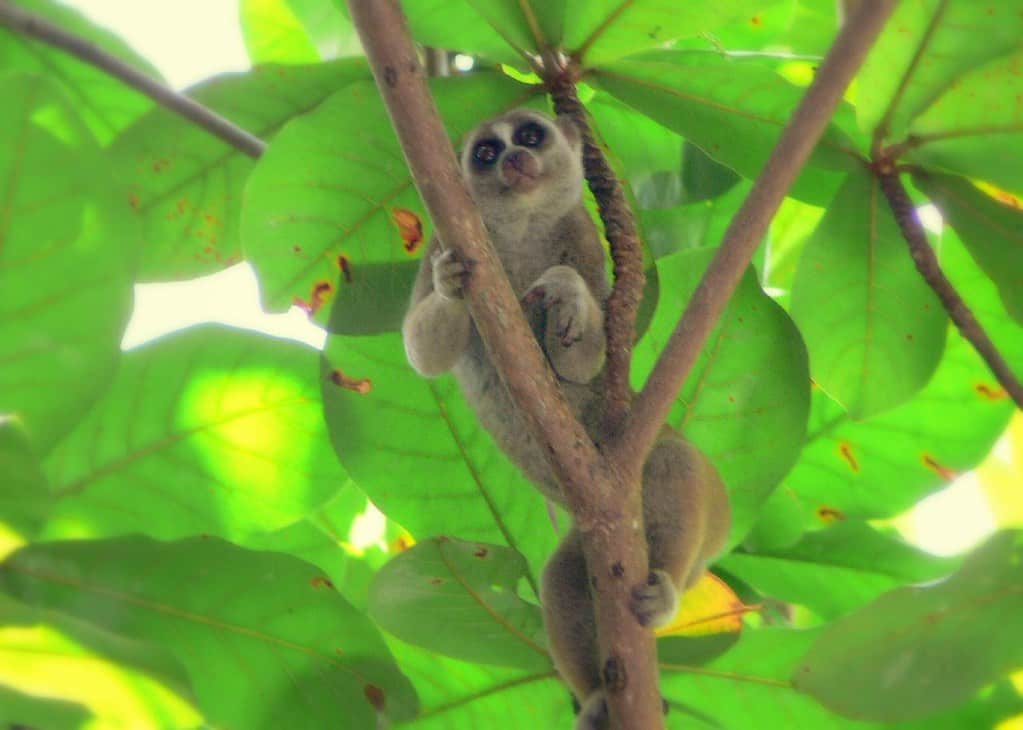In the shadowy canopies of Southeast Asian forests dwells a creature that defies our expectations of primates. With its round, innocent-looking eyes and teddy bear appearance, the slow loris might seem like nature’s perfect embodiment of cuteness. Yet behind this disarming facade lies something remarkable: the world’s only venomous primate. These nocturnal creatures possess a toxic bite that can cause severe allergic reactions in humans and even death in smaller animals. The slow loris stands as a fascinating contradiction—simultaneously adorable and dangerous, a primate that breaks the rules we thought we knew about our evolutionary relatives. This article explores the unique biology, behavior, and conservation status of these extraordinary animals, uncovering the science behind their venom and the challenges they face in the modern world.
The Slow Loris: An Introduction to a Unique Primate
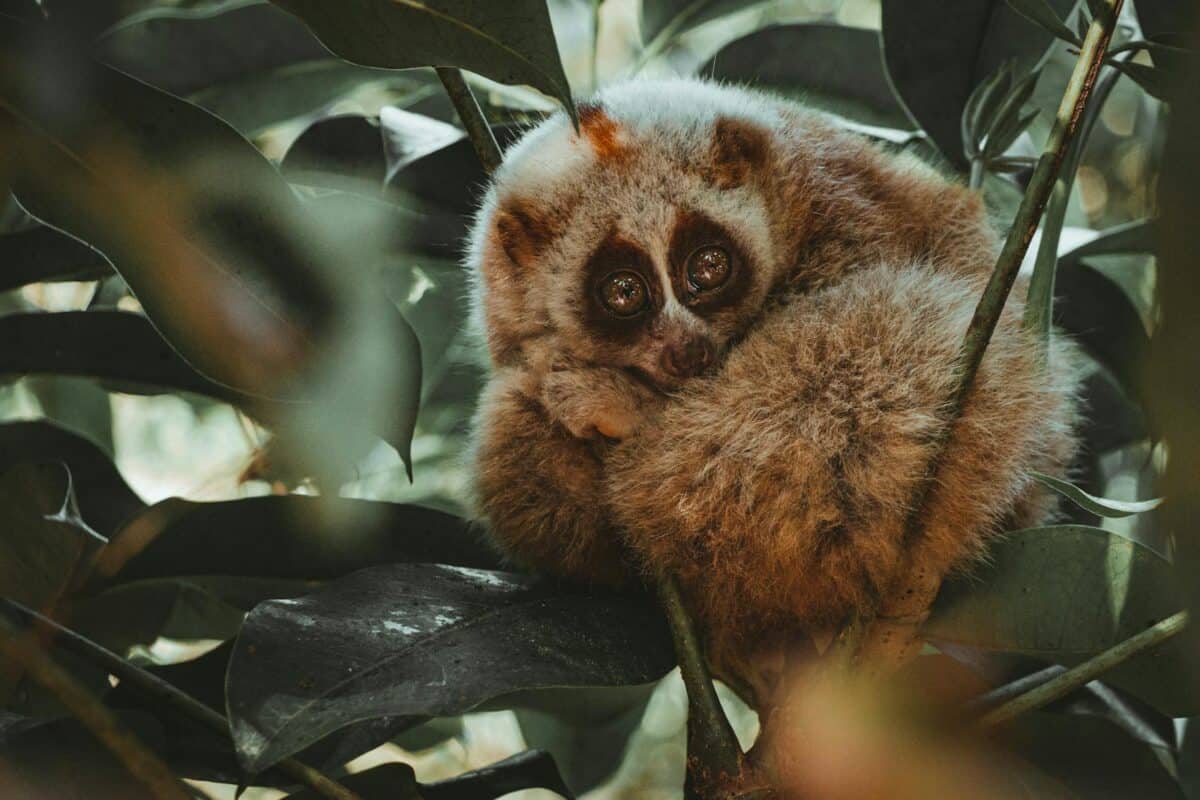
The slow loris belongs to the genus Nycticebus, a group of nocturnal primates native to Southeast Asia. There are currently nine recognized species, ranging from northeast India through Vietnam, Cambodia, southern China, and down through Malaysia, Indonesia, and the Philippines. These small primates typically weigh between 265 and 1,500 grams (0.5-3.3 pounds) and are characterized by their deliberate, slow movements, from which they derive their common name. They possess large, forward-facing eyes that provide excellent night vision, short ears often hidden in their thick fur, and distinctive facial markings that vary by species. Unlike many primates, lorises lack the ability to leap between trees, instead carefully climbing and gripping branches with their powerful hands and feet, which feature a reduced second digit and specialized blood vessels that give them extraordinary gripping strength even when sleeping.
The Discovery of Primate Venom
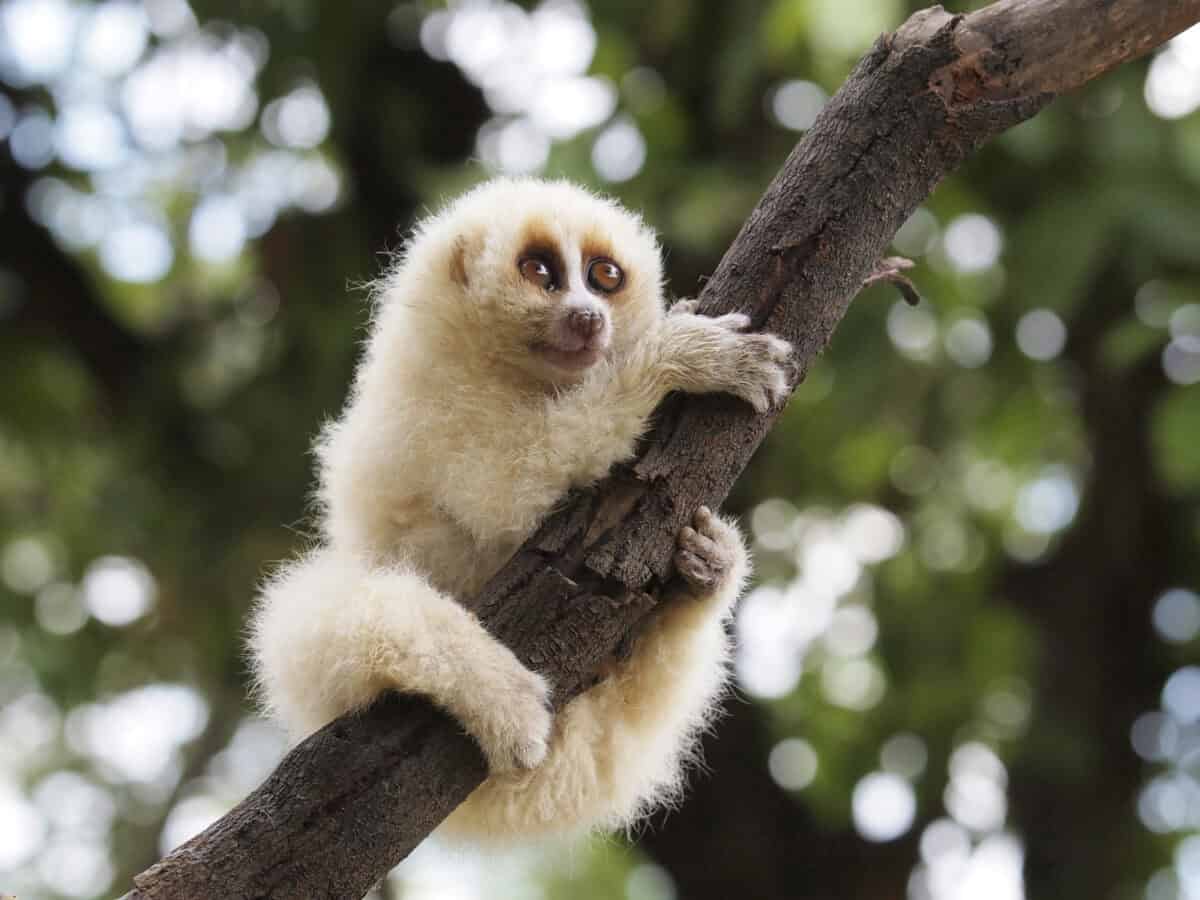
The venomous nature of the slow loris wasn’t fully acknowledged by the scientific community until relatively recently. While local communities in Southeast Asia had long known about the loris’s painful bite, Western science only began to seriously investigate loris venom in the late 20th century. In 2006, a comprehensive study confirmed what indigenous knowledge had maintained for generations—that slow lorises produce a secretion from a gland on their upper arm that, when mixed with saliva, creates a potent venom. This discovery shattered the long-held belief that primates, as a taxonomic order, did not include venomous species. The loris’s unique adaptation represents the only known example of venom production in any of the approximately 350 primate species, making it an evolutionary outlier of significant scientific interest. This relatively late scientific recognition highlights how even within well-studied animal groups, remarkable adaptations can remain scientifically unacknowledged for centuries.
The Venom Delivery System: A Biological Innovation

The slow loris possesses one of the most unusual venom delivery systems in the animal kingdom. Unlike snakes that inject venom through hollow fangs, or platypuses that use spurs, the slow loris employs a two-step process that begins with a specialized brachial gland (called the brachial gland of exudation) located near the elbow on the inside of each arm. When threatened, the loris raises its arms above its head in what appears to be a defensive posture, but is actually bringing these glands closer to its mouth. It then licks the secretions from these glands, mixing them with saliva in its mouth. The mixture is activated by this combination and becomes toxic. The loris then delivers this venom through a bite from its specialized dentition—most notably, its lower front teeth form a toothcomb that draws the venom into the wound through capillary action. This complex delivery method represents a unique evolutionary solution not seen in any other mammal and demonstrates how different selective pressures can produce remarkably diverse adaptations even within closely related animal groups.
The Chemistry of Loris Venom
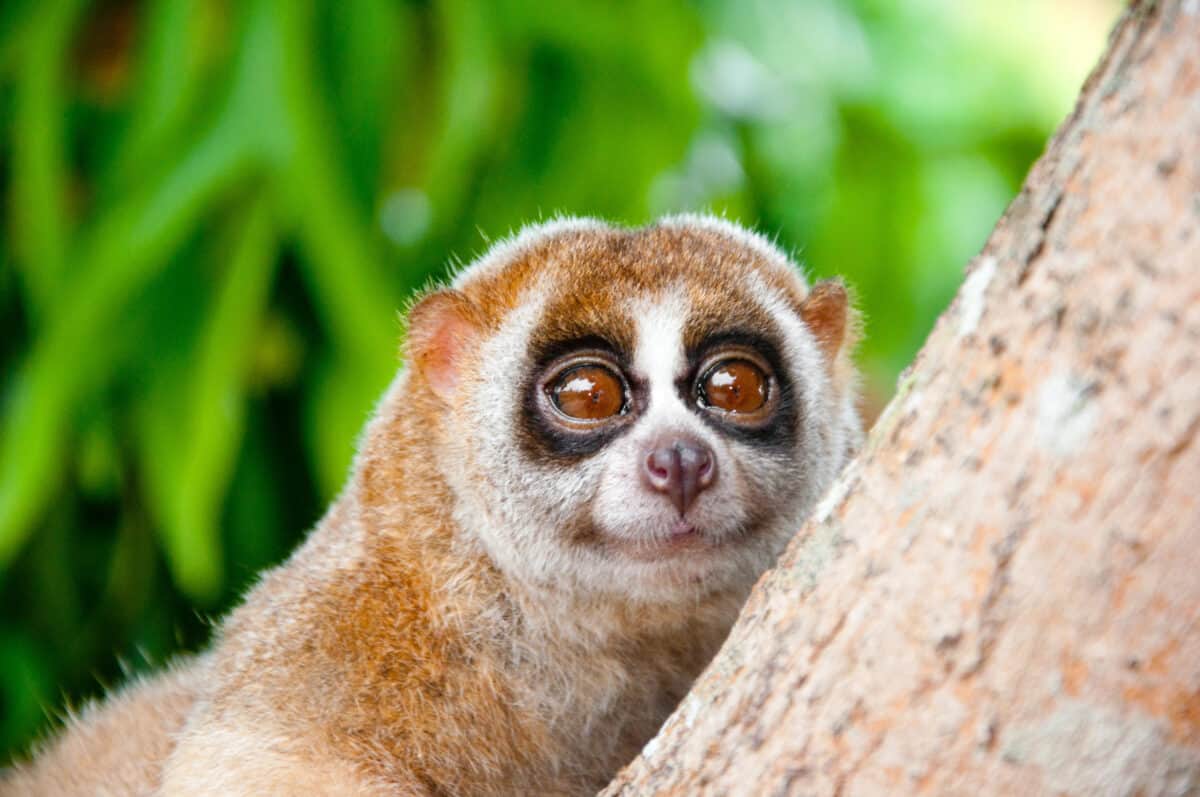
The venom of the slow loris is a complex biochemical cocktail whose full composition is still being studied. The primary active component is a protein called Fel d 1, which is remarkably similar to the allergenic protein found in cat saliva and dander that causes allergic reactions in humans. When the brachial gland secretion mixes with saliva, it creates a compound that becomes increasingly potent. Laboratory analysis has shown the venom contains over 200 volatile components, including various proteins, oils, and other compounds. One interesting aspect is that the venom’s composition varies somewhat between different loris species, suggesting evolutionary adaptations to different ecological niches. The venom appears to have evolved primarily as a defensive adaptation rather than for hunting, as lorises are omnivorous and typically feed on sap, nectar, fruits, insects, and small vertebrates that they can capture without envenomation. This defensive venom represents a unique biochemical adaptation among primates and continues to be a subject of scientific interest for potential applications in understanding allergic reactions and possibly developing new medical treatments.
Effects of Loris Venom on Humans and Other Animals

When a slow loris bite delivers venom to humans, the results can be serious and sometimes life-threatening. The most common reaction is intense pain at the bite site, followed by swelling that may last for days or even weeks. More concerning are the anaphylactic reactions that can occur in sensitive individuals, leading to difficulty breathing, rapid pulse, and potentially death if left untreated. There are documented cases of humans requiring hospitalization after loris bites, with some patients needing intensive care. For other animals, particularly potential predators smaller than humans, the venom can be fatal. Scientific studies have shown that the venom is particularly effective against other mammals and certain reptiles. Interestingly, the venom appears to have evolved not just for defense against predators but also for competition with other slow lorises. When male lorises fight over territory or females, they often bite each other, and the resulting wounds can become necrotic, sometimes leading to slow, painful death from infection. This intraspecific use of venom is relatively rare in the animal kingdom and suggests complex evolutionary pressures shaped this unique adaptation.
Evolutionary Origins: Why Did Lorises Develop Venom?
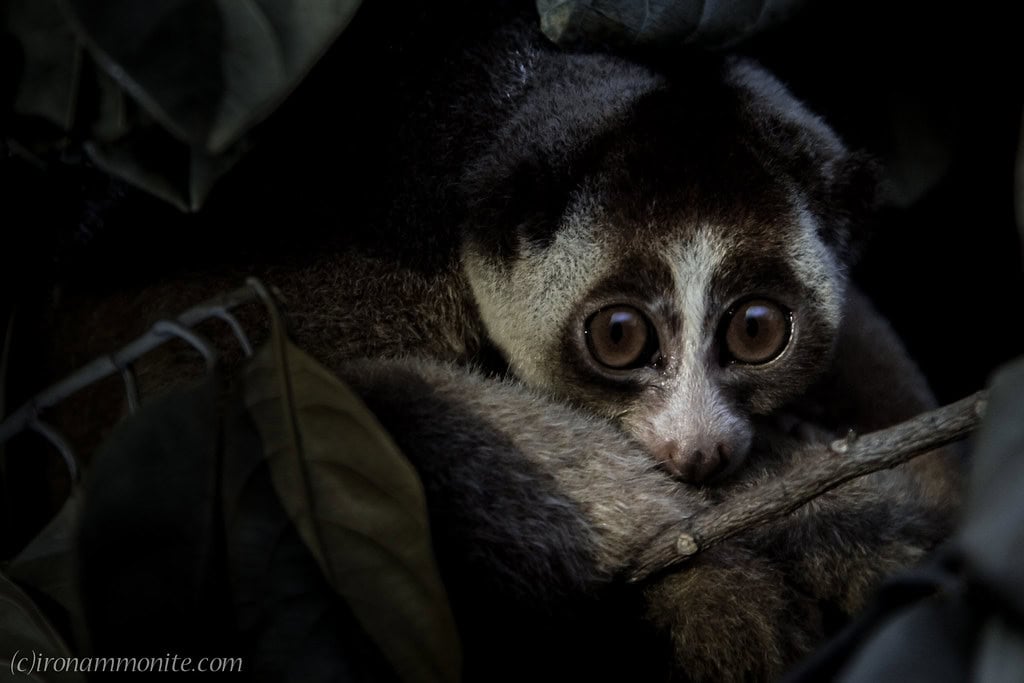
The evolution of venom in slow lorises represents an evolutionary puzzle that scientists are still working to fully understand. The leading theory suggests that venom development was driven by a combination of predator defense and intraspecific competition. Unlike many primates that rely on group living or agility to escape predators, the slow-moving lorises needed alternative protection mechanisms. Fossil evidence indicates that loris ancestors diverged from other primates approximately 40 million years ago, giving ample time for this specialized adaptation to develop. Comparative genetic studies between venomous and non-venomous primate species have identified potential genetic pathways that were modified in lorises to enable venom production. Interestingly, infant lorises are born without venom but begin producing it as they mature, suggesting the adaptation is energetically costly and unnecessary until juveniles begin to forage independently. The geographic distribution of loris species across Southeast Asia also reveals that species in areas with higher predator density tend to have more potent venom, providing additional evidence that predation pressure was a significant evolutionary driver. This remarkable adaptation demonstrates how evolution can produce unexpected solutions even within well-established taxonomic groups.
Ecological Role and Behavior of Slow Lorises

Beyond their venomous nature, slow lorises play important ecological roles in their forest habitats. As nocturnal omnivores, they contribute to pollination when feeding on nectar and flowering plants, with studies showing they can transfer pollen between trees separated by considerable distances. Their consumption of insects helps regulate pest populations, particularly among certain beetle and moth species that can damage forest vegetation. Behaviorally, lorises are generally solitary animals that communicate through complex scent marking and vocalizations that are often beyond human hearing range. They maintain territories of 0.4 to 15 hectares depending on the species and habitat quality. Unlike many primates, lorises don’t form permanent social groups, though they do engage in some social behaviors including grooming and occasionally sharing sleeping sites with related individuals. Their movements are methodical and deliberate, an adaptation that helps them move silently through the forest canopy and avoid detection by predators. This slow movement also conserves energy, allowing lorises to subsist on relatively low-calorie diets compared to other primates of similar size. Their unique locomotion pattern, called bilateral progression, involves never letting go of one branch before securing a grip on another—a cautious approach to arboreal living that minimizes the risk of falls.
Conservation Status and Threats
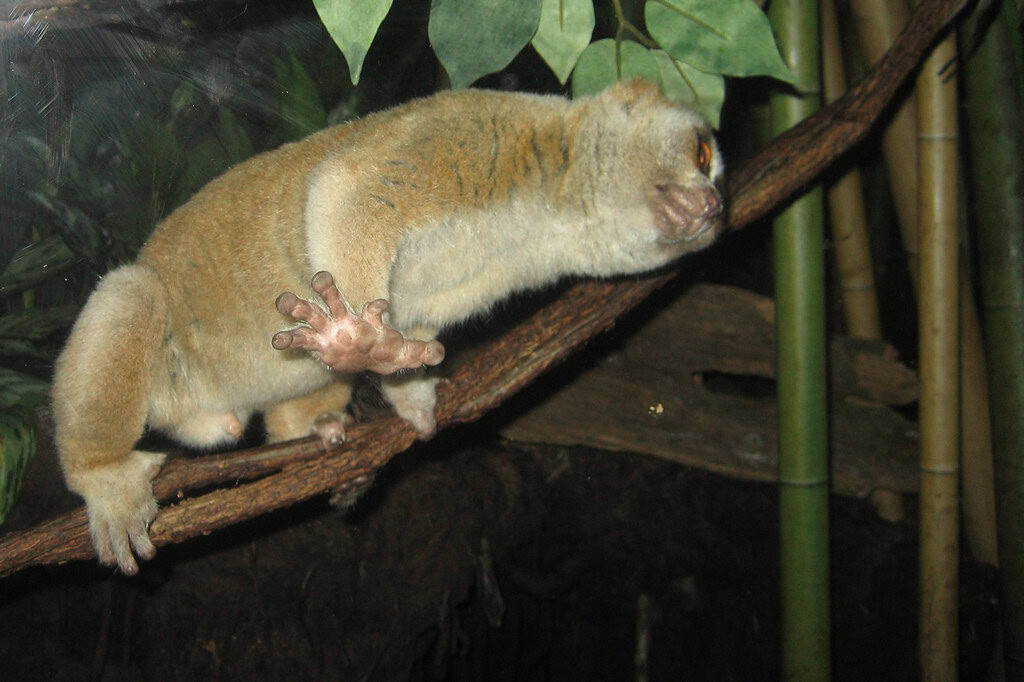
All eight species of slow lorises are currently threatened in the wild, with classifications ranging from Vulnerable to Critically Endangered on the IUCN Red List. The greatest threat to their survival is habitat loss, as the forests of Southeast Asia continue to be cleared for agriculture, particularly palm oil plantations, logging, and urban development. Between 1990 and 2020, countries within the loris range lost an average of 15-20% of their forest cover, directly impacting loris populations. The second major threat is the illegal wildlife trade, where lorises are captured for the exotic pet trade and traditional medicine. Ironically, their venomous nature contributes to their endangerment, as captured lorises often have their teeth painfully removed without anesthesia to prevent them from delivering toxic bites. This cruel practice leads to high mortality rates among captured individuals. Additionally, their alleged medicinal properties in certain traditional Asian medicine systems drive poaching, with various body parts sold for purported cures. Climate change represents an emerging threat, as the specialized dietary and habitat requirements of lorises make them particularly vulnerable to ecosystem shifts. Conservation efforts are hampered by the nocturnal, secretive nature of these animals, making population assessments challenging and conservation planning difficult without accurate data.
Research Challenges and Recent Discoveries

Studying slow lorises presents unique challenges to researchers due to their nocturnal habits, cryptic behavior, and the inhospitable terrain of their habitats. Field studies require specialized equipment including red-light headlamps that don’t disturb the light-sensitive eyes of lorises, and often involve researchers working through the night in dense forests. Despite these challenges, recent research has yielded fascinating insights. A 2020 study discovered that different loris species produce venoms with varying potency, suggesting localized evolutionary adaptations. Research published in 2019 revealed that lorises appear to self-medicate by consuming certain plants with anti-inflammatory properties after territorial conflicts, potentially counteracting the effects of venom from conspecific bites. Genetic studies have identified unique adaptations in loris pain receptors that may provide them with resistance to their own venom, similar to mechanisms seen in some venomous snakes. Technological advances including environmental DNA sampling, thermal imaging, and miniaturized GPS tracking devices are beginning to overcome some research limitations, providing more detailed understanding of loris movements, territory use, and population dynamics. These research breakthroughs are critical for developing effective conservation strategies for these enigmatic primates.
The Social Media Problem: Lorises as Viral Pets
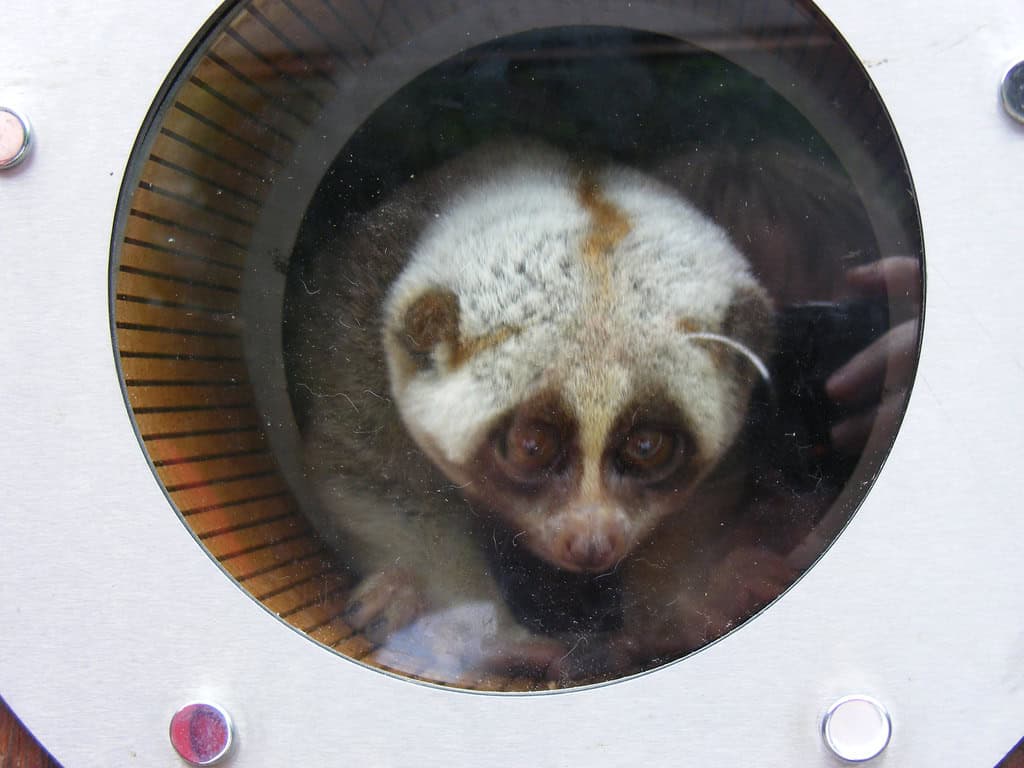
The internet age has created a new threat to slow loris conservation in the form of viral videos and social media. Since around 2009, videos of pet slow lorises being “tickled,” fed inappropriate foods, or dressed in human clothing have accumulated hundreds of millions of views across platforms like YouTube, Instagram, and more recently, TikTok. These videos, while appearing cute to uninformed viewers, actually show animals in distress—the characteristic “arms raised” posture often interpreted as “enjoying being tickled” is actually the defensive posture lorises use when preparing to deliver venom. Research published in 2016 found that such videos directly contributed to increased demand for pet lorises, with survey respondents specifically citing viral videos as their reason for wanting a loris as a pet. Conservation organizations have worked with social media companies to flag such content, but new videos continue to appear regularly. The viral spread of these images creates persistent demand for pet lorises, directly funding an illegal wildlife trade that removes an estimated 30,000 slow lorises from the wild annually, with mortality rates during capture and transport exceeding 90% according to confiscation data. This modern threat demonstrates how well-intentioned but uninformed social media engagement can have devastating real-world consequences for endangered species.
Captive Care Challenges and Ethical Considerations
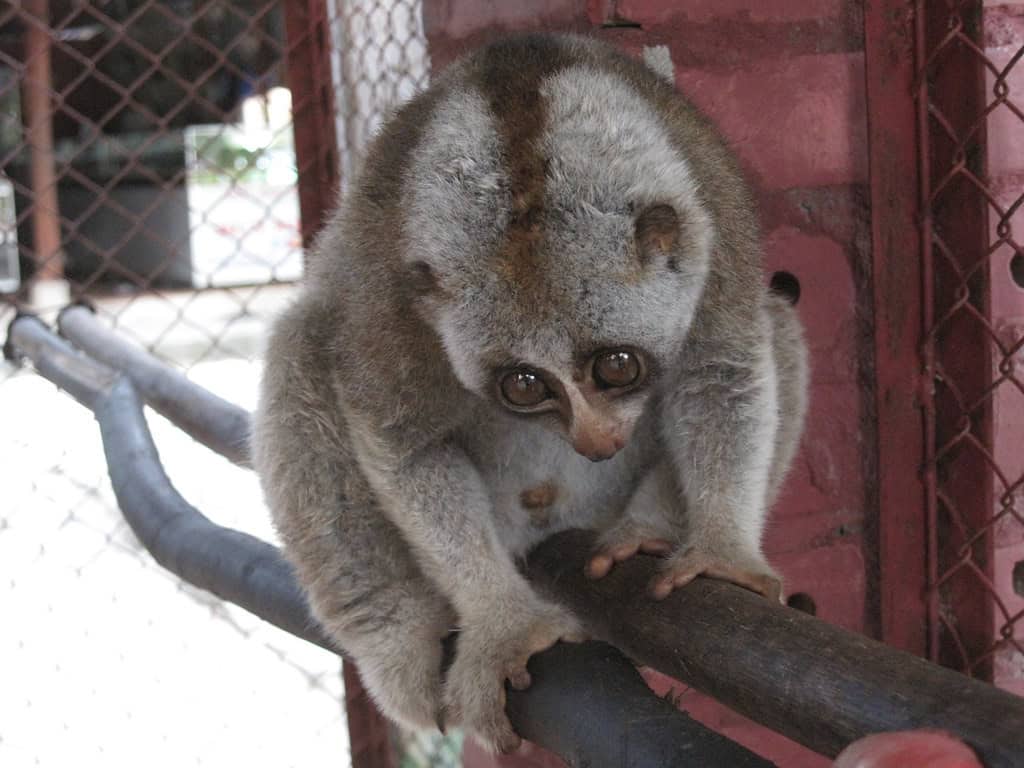
Even in legitimate conservation-oriented facilities, slow lorises present unique captive care challenges. Their specialized dietary needs require carefully formulated nutrition plans that mimic their natural diet of gums, saps, nectar, fruits, and insects—a complex mix difficult to replicate in captivity. Their nocturnal nature means facilities must reverse normal lighting patterns to allow visitors to see active animals, which can create stress. The social structure of lorises is still not fully understood, making appropriate housing arrangements difficult to determine. Their venomous nature presents safety concerns for caretakers, requiring specialized handling protocols. Even legitimate zoos historically had poor success rates with loris captive breeding programs, though this has improved with better understanding of their needs. Beyond these practical challenges lie ethical considerations: given their endangered status and specialized requirements, is keeping lorises in captivity justifiable? Conservation organizations generally maintain that captive populations should be limited to rescue animals that cannot be released, scientific research with direct conservation applications, and carefully managed breeding programs designed to maintain genetic diversity for potential reintroduction. The ethical complexity increases with confiscated pet lorises, which often cannot be released due to dental damage, psychological issues from improper socialization, or health problems from inappropriate care, creating lifelong captive animals that require specialized facilities.
Conservation Efforts and Success Stories
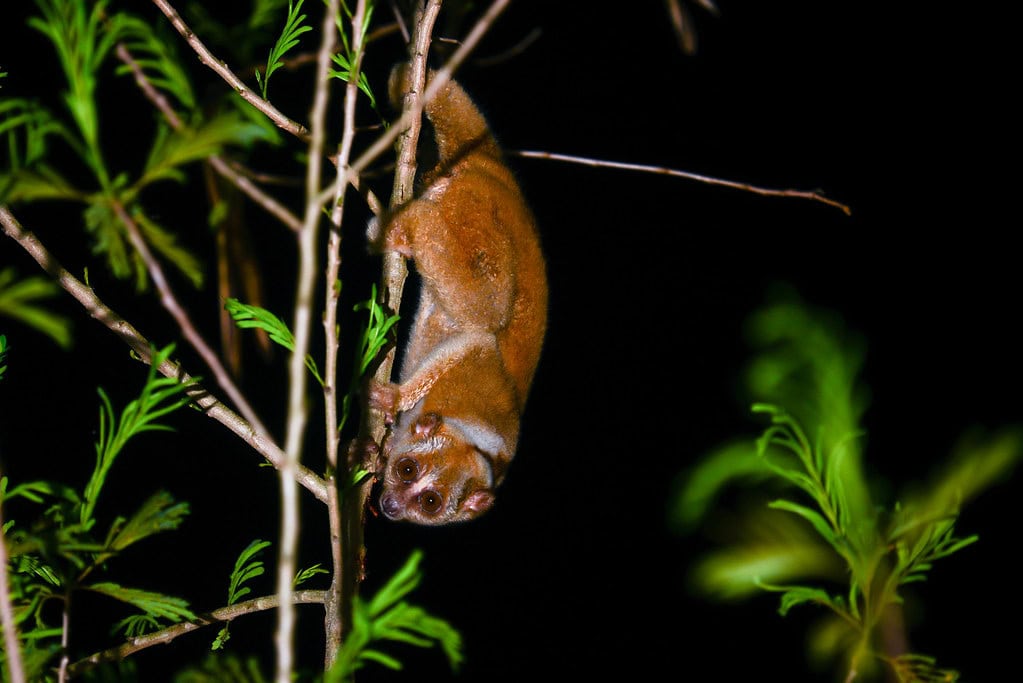
Despite the challenges facing slow loris conservation, several promising initiatives are making progress. The Little Fireface Project, named after the Sundanese word for loris, has established community-based conservation programs in Indonesia that employ former loris hunters as field researchers and conservation advocates, successfully reducing poaching in target areas by over 60% since 2012. Organizations like International Animal Rescue operate rehabilitation centers in Indonesia and Vietnam, where confiscated pet lorises undergo comprehensive rehabilitation protocols before potential release. These programs have successfully returned over 200 lorises to protected forest areas since 2010, with post-release monitoring showing survival rates exceeding 70%. In 2017, the Association of Southeast Asian Nations (ASEAN) established its first action plan specifically targeting loris conservation, creating cross-border cooperation to combat wildlife trafficking. Protected area expansion has also shown promise, with Vietnam’s recent expansion of Pu Mat National Park specifically designating areas for loris conservation based on scientific habitat modeling. Technology is providing new conservation tools, including environmental DNA sampling techniques that can detect loris presence from water and soil samples, allowing more efficient population monitoring. While challenges remain substantial, these targeted approaches demonstrate that with appropriate resources and scientific backing, loris populations can be stabilized and potentially recovered.
Conclusion: The Continuing Mystery of the Venomous Primate
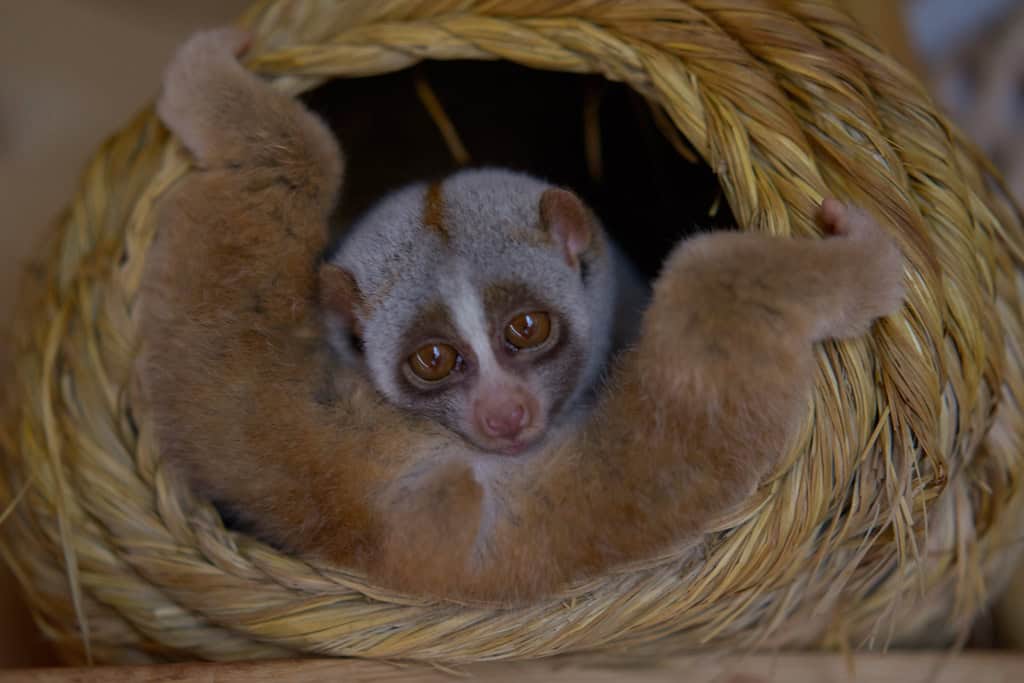
The slow loris stands as a remarkable evolutionary puzzle—a primate that defies categorization by possessing a trait thought impossible within its taxonomic order. Its specialized venom delivery system represents one of nature’s most unusual adaptations, one that continues to yield new scientific insights decades after its formal recognition. As research technologies advance, we are likely to uncover even more about the biochemistry, evolution, and ecological significance of this unique venomous adaptation. However, scientific discovery alone cannot ensure the survival of these extraordinary primates. Their future depends on addressing multiple interconnected threats including habitat destruction, illegal trade, and public misconceptions perpetuated through social media. The slow loris reminds us that even within well-studied animal groups like primates, nature holds surprising secrets—and that protecting biodiversity means safeguarding even the most unusual and unexpected evolutionary adaptations for future generations to study and appreciate.
- Do Animals Dream? What Research Reveals - August 18, 2025
- The Golden Eagle of Utah – A Majestic Hunter of the High Desert - August 18, 2025
- The Mammal That Can Survive the Longest Underwater Without Air - August 18, 2025

